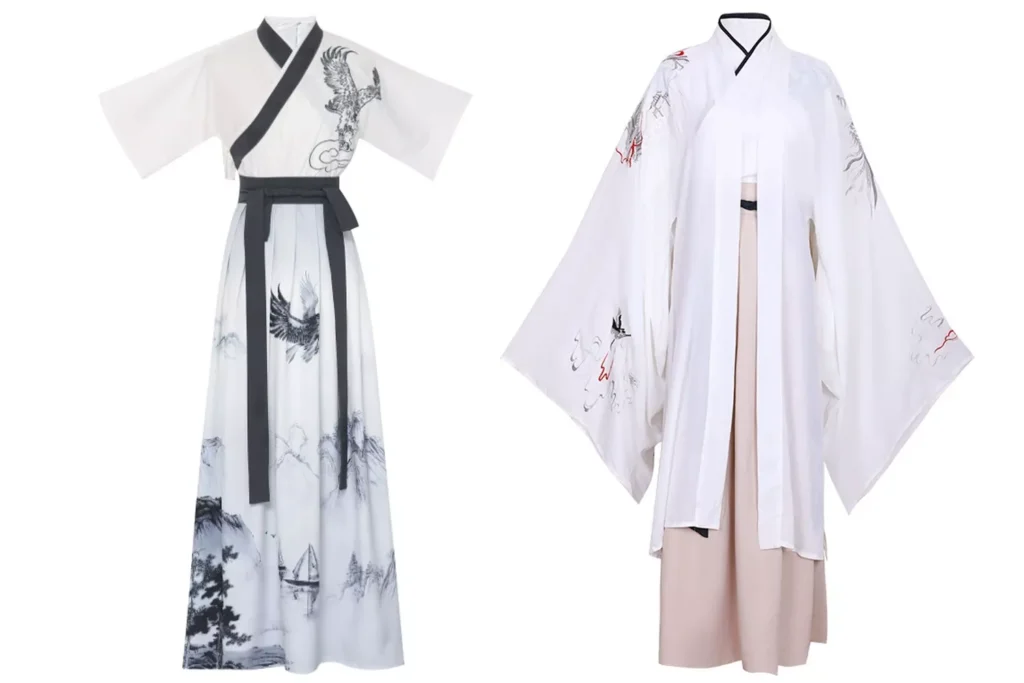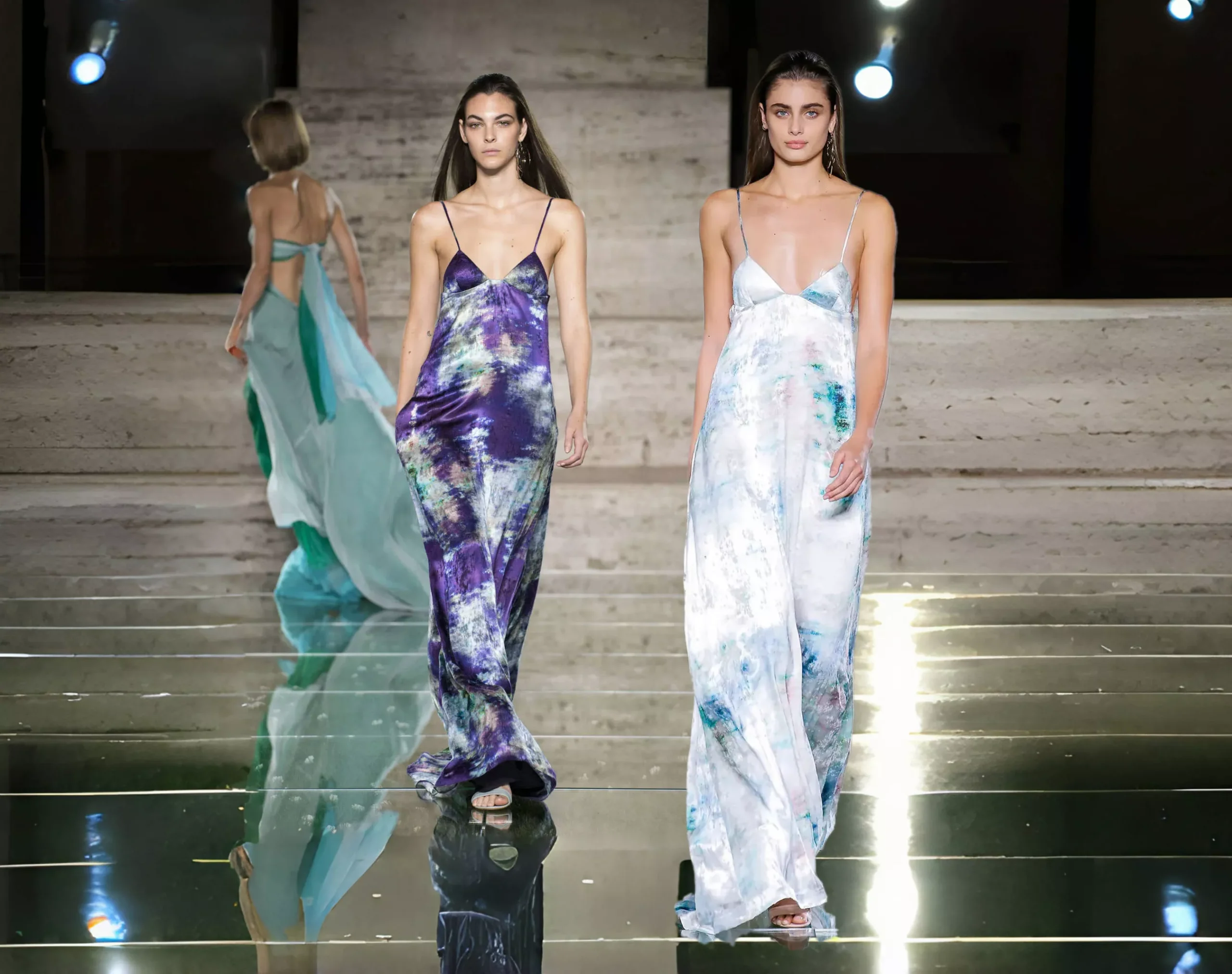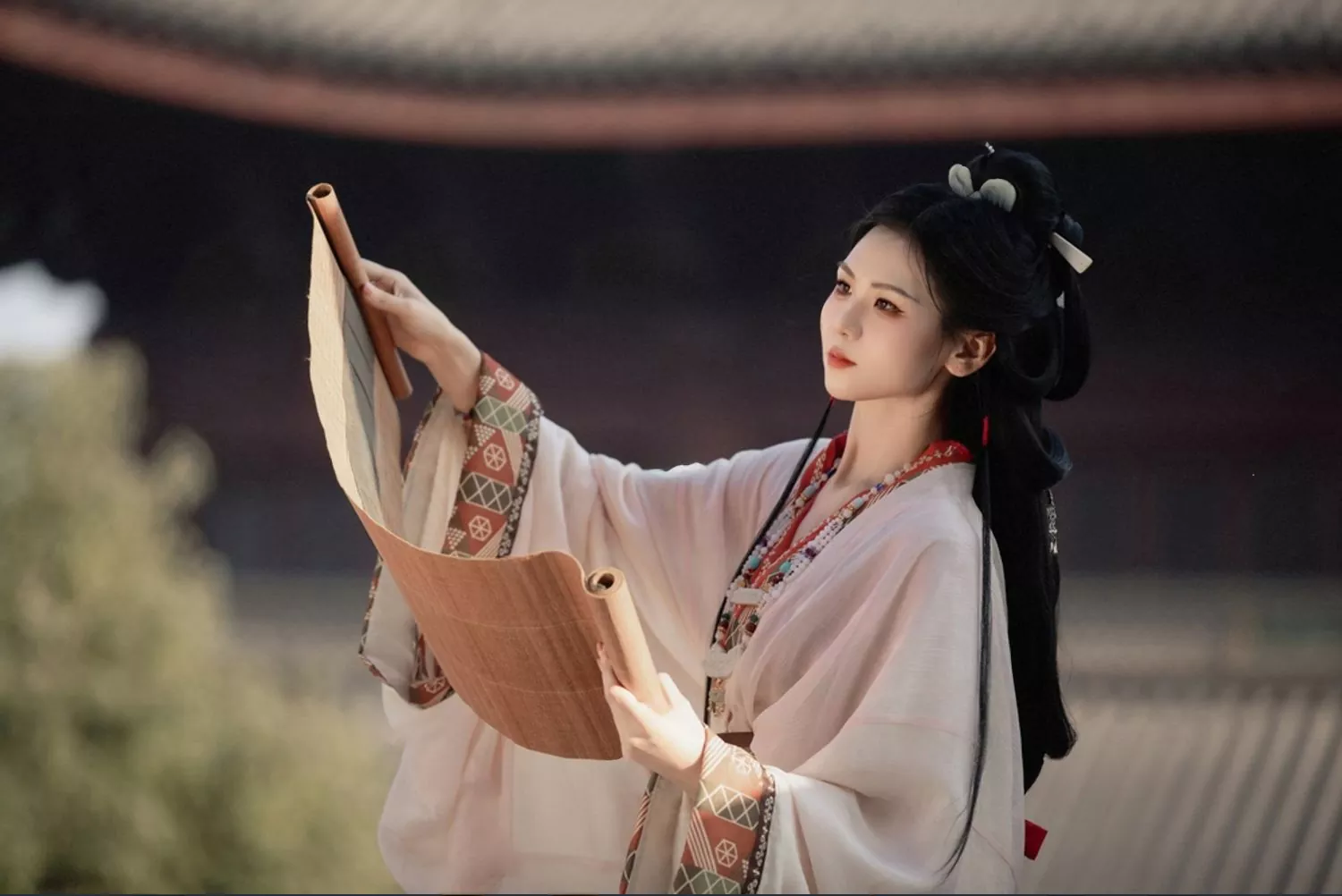In the long river of Chinese civilization, Hanfu shines like a bright pearl, standing as an outstanding representation of traditional Chinese attire. Having withstood the test of thousands of years, it carries profound cultural significance. Far from being merely clothing for the body, Hanfu serves as a cultural symbol that embodies the spiritual pursuits and unique aesthetic concepts of the Chinese nation. In modern society, Chinese traditional attire is experiencing a vigorous revival. From precious exhibits quietly displayed in museums to fashionable outfits commonly seen on the streets, it is attracting increasing attention with its unique charm, vividly showcasing national identity and cultural confidence.
The Historical Evolution and Cultural Significance of Hanfu
The Origin and Early Development of Hanfu

The history of Hanfu is long and storied, traceable back to the ancient times of the Chinese ancestors. From its initial role as simple body coverings, it gradually developed more defined regulations and styles through the prolonged evolution of the Xia, Shang, and Zhou dynasties. By the Qin and Han periods, traditional Chinese clothing had largely taken its definitive form. Its unique design embodies the profound philosophical concept of “the unity of heaven and humanity.” The broad and expansive sleeves resemble the embrace of nature, while the flowing and continuous lines are akin to mountain streams, vividly symbolizing the beautiful vision of harmonious coexistence between humans and nature. The patterns on Chinese traditional attire are rich in meaning. The dragon and phoenix motifs, as exclusive symbols of imperial power and nobility, majestically proclaim the status of the ruling class on the garments. The cloud patterns, with their dynamic forms, convey wishes for good fortune and happiness. The flower and bird motifs ingeniously incorporate the beauty of nature, showcasing the vibrant vitality of all living things.
The Characteristics and Development of Hanfu Across Dynasties
During the Qin and Han periods, the Shenyi became the mainstream attire. It innovatively connected the upper garment with the lower skirt, greatly facilitating daily activities while perfectly embodying the solemn demeanor of a land of etiquette in every gesture. As time flowed into the Tang Dynasty, with its national strength and cultural prosperity, the Ruqun emerged and became the typical representation of Tang Dynasty Hanfu. Its vibrant colors resemble the splendid scrolls of the Tang Golden Age, and its diverse and novel styles fully showcase the open, inclusive, and assimilative spirit of the era. In the Ming Dynasty, the Aoqun became widely popular, with its exquisite embroidery and elaborate decorative details reflecting the affluent socio-economic conditions and the high level of cultural prosperity of the time.
The Interruption and Inheritance of Hanfu in History
After the Qing army entered the customs, the forced implementation of the Queue Order and the policy of changing clothing caused traditional chinese clothing to gradually disappear in the Central Plains region. However, in some remote and relatively isolated areas, as well as in certain ethnic minority settlements, traditional Chinese clothing managed to survive and be passed down thanks to its tenacious vitality. Entering the 20th century, as China’s comprehensive national strength steadily increased and the cultural confidence of the people continuously grew, the traditional chinese clothing revival movement ignited like a spark and gradually spread. More and more scholars and enthusiasts have devoted themselves to this cause, focusing intently and conducting in-depth research on Chinese traditional attire, striving to uncover clues from ancient texts and unearthed artifacts, and endeavoring to restore the historical original form of traditional chinese clothing and deeply explore its rich cultural significance.
The Revival and Innovation of Hanfu in Modern Society
The Rise and Development of the Hanfu Revival Movement
In 2003, Wang Letian bravely walked the streets wearing traditional Chinese clothing, a seemingly simple act that, like a boulder thrown into a calm lake, stirred up waves and is recognized as the starting point of the traditional chinese clothing revival movement. Since then, the spark began to spread, and people filled with a passion for traditional culture responded in droves, with more and more individuals spontaneously joining the ranks of the Hanfu revival. The Chinese traditional attire revival movement is of extraordinary significance; it is by no means limited to the reappearance of traditional attire’s appearance but is a comprehensive and profound inheritance of traditional culture. In this process, people delve into historical texts to explore the origins and developmental trajectory of traditional chinese clothing; philosophically analyze the thoughts contained within Hanfu, such as “the unity of heaven and humanity”; artistically uncover the beauty of Hanfu’s color coordination and pattern design; and also strive to restore traditional etiquette, integrating traditional chinese clothing into daily ceremonial activities. This series of initiatives has greatly promoted the comprehensive revival of Chinese traditional culture in modern society, allowing ancient culture to rejuvenate with new vitality.
Innovation and Fusion of Hanfu in the Modern Fashion Realm
Today, designers are actively unleashing their creativity, ingeniously combining traditional Chinese clothing elements with contemporary fashion to spark dazzling innovations, resulting in a plethora of unique and novel Chinese traditional attire styles. For instance, integrating the classic cross-collar design of Hanfu into modern minimalist-style tops preserves the elegant charm of the cross-collar while adapting it with modern tailoring to better fit the body’s contours, aligning with the modern pursuit of comfort and style. Additionally, incorporating the right-lapel element into the neckline design of dresses infuses modern attire with an antique cultural essence. Moreover, collaborations between traditional chinese clothing and international fashion brands are becoming increasingly frequent. Renowned global brands like Gucci and Dior have astutely recognized the unique allure of Hanfu elements and have launched product lines featuring these motifs. These collaborations not only allow Hanfu to shine on the international stage, enhancing its global recognition, but also foster cross-border exchanges and fusion between Chinese and Western cultures, showcasing the profound depth of China’s traditional attire culture to the world.
Social Media and the Dissemination of Hanfu Culture
Social media platforms such as YouTube, TikTok, Pinterest, and others have established a vast stage for the propagation of traditional Chinese clothing culture. A multitude of traditional chinese clothing enthusiasts are active on these platforms, meticulously sharing their diverse styles of Hanfu outfits; some pair traditional accessories to exude classical charm, while others ingeniously blend modern elements to present a sense of fashion. They also provide detailed explanations of traditional Chinese clothing knowledge, including its forms, historical context, and more, and share live scenes from traditional chinese clothing events held in various locations, from Chinese traditional attire gatherings to cultural festivals. These contents have attracted a large number of followers, forming a massive Hanfu cultural community. Some celebrities and influencers have also joined in, leveraging their influence to participate in various events dressed in traditional chinese clothing and shooting exquisite short videos featuring traditional chinese clothing. Celebrities showcase the splendor of traditional chinese clothing on screen, while influencers portray the everyday wear of traditional chinese clothing in life’s scenarios, further breaking the boundaries of traditional chinese clothing culture dissemination and vigorously promoting the popularity and prevalence of traditional chinese clothing culture among the general public, making traditional chinese clothing a striking cultural landscape in today’s society.
The Social Impact and Value of Hanfu Culture
The Influence of Hanfu Culture on Young People

In contemporary society, Chinese traditional attire culture acts like a powerful magnet, deeply attracting a large number of young people. No longer satisfied with the simplistic descriptions of traditional culture in textbooks, they actively engage with traditional chinese clothing culture through various means. Dressed in exquisite Hanfu, they seem to travel through a millennium, personally experiencing the charm of ancient life; earnestly learning Hanfu etiquette such as the Yi Li and Gong Shou Li, they appreciate the modesty and respect embedded in traditional rituals. Participating in gatherings, ceremonies, and other activities organized by Hanfu societies, they delve into the profound depth of Chinese traditional culture through immersive experiences, allowing a sense of national pride and cultural confidence to quietly take root in their hearts.
Meanwhile, Chinese traditional attire culture provides young people with a unique stage for personal expression. They meticulously select Hanfu of different forms, colors, and patterns, pairing them with distinctive accessories and skillfully blending ancient and modern elements to fully exhibit their individuality and aesthetic sense. At Hanfu events, young people meet like-minded companions through shared interests, discussing traditional chinese clothing knowledge, sharing styling tips, enriching their social circles, adding splendid colors to their routine lives, and further deepening their love for Hanfu culture through interactions and exchanges.
The Integration of Hanfu Culture and Tourism
Nowadays, many tourist attractions have keenly captured the popularity of Hanfu culture and have launched unique traditional chinese clothing experience programs. Visitors can select their favorite Hanfu attire within the antique charm of scenic areas, strolling between pavilions and landscapes, as if transforming into ancient literati or elegant ladies, capturing poetic moments with their cameras and personally experiencing the unique charm of traditional Chinese culture.
Some regions have deeply integrated Chinese traditional attire culture with tourism by hosting grand Hanfu cultural festivals and Hanfu tourism festivals. During these events, a continuous array of exciting traditional chinese clothing fashion shows, traditional song and dance performances, and cultural lectures attract tourists from all corners of the globe. These activities not only bring a surge of popularity to the scenic spots, effectively promoting the flourishing development of local tourism, but also allow more people to encounter and understand Hanfu culture during their travels, facilitating the spread of Hanfu culture across a broader geographical area.
The Economic Value of Hanfu Culture
As traditional chinese clothing culture continues to heat up, the Chinese traditional attire industry has gradually built a complete and thriving industrial chain. From talented designers conceiving novel and unique traditional chinese clothing styles, to skilled artisans meticulously crafting them, to the diverse sales channels both online and offline, and the rental services providing convenience for consumers seeking novelty, as well as various traditional chinese clothing experience shops offering immersive experiences, each link is closely connected.
Data shows that in 2022, the market size of Chinese traditional attire in China has reached 10.16 billion yuan, with strong development momentum, and is expected to climb to 19.11 billion yuan by 2025. The prosperous development of the traditional chinese clothing industry has created a large number of jobs for society, from design, production, and sales to event planning and cultural promotion, absorbing talents with various professional backgrounds, injecting new vitality into economic growth, and achieving a win-win situation of cultural value and economic value while inheriting the culture.
Challenges Faced by Hanfu Culture and Future Prospects

Challenges Facing Hanfu Culture
While Chinese traditional attire culture is flourishing, it also encounters numerous obstacles. Currently, there is a lack of unified standards for traditional chinese clothing forms and etiquette, leading to differing understandings of traditional chinese clothing among enthusiasts from various regions and significant variations in production and wearing norms, which easily sparks disputes and misunderstandings. Additionally, due to complex craftsmanship and the use of exquisite materials, Hanfu prices are relatively high, deterring many average consumers and greatly limiting its widespread promotion among the general public. Furthermore, the inheritance of Hanfu culture requires in-depth historical research and innovative design, both of which rely on professional talent and sufficient funding. The scarcity in these areas currently constrains the continuous advancement of Hanfu culture.
The Future Development Direction of Hanfu Culture
To achieve the steady development of Hanfu culture, a multi-pronged approach is necessary. Experts and scholars should be organized to conduct in-depth research, collate historical texts and artifacts, and establish authoritative and unified standards for Hanfu forms and etiquette. The government and relevant institutions must increase support for the Chinese traditional attire industry, such as offering tax incentives and technical guidance, to help reduce costs and improve quality. It is also essential to leverage diverse channels, including social media and cultural events, to vigorously promote Hanfu culture and attract more people to participate. In the future, through deep collaborations with international fashion brands and active participation in international cultural exchange events, Hanfu culture is destined to shine brightly on the global stage, showcasing the charm of Chinese traditional culture to the world and fostering profound exchanges and integration between Chinese and Western cultures.
Hanfu is undoubtedly a cultural treasure of the Chinese nation, deeply engraved with the historical memories of the past and carrying the continuous spiritual pursuits. From the lavish court attire to the everyday garments of the common folk, it has weathered thousands of years of trials and tribulations, and now, in the new era’s tide, it is reviving with a fresh and vibrant appearance. This cultural journey that traverses ancient and modern times is a profound reflection on the past and a beautiful prospect for the future. Let us join hands and hearts to fully inherit and promote Chinese traditional attire culture, enabling this ancient yet dynamic cultural heritage to bloom with even more dazzling brilliance on the stage of the new era.
FAQ:
1. What is Hanfu?
Hanfu is the representative traditional attire of China, with a history spanning thousands of years, embodying rich cultural significance and aesthetic concepts.
2. Why is Hanfu experiencing a revival in modern society?
The revival of Hanfu represents the inheritance and innovation of traditional culture, reflecting national confidence and cultural identity, while modern designs infuse it with contemporary relevance.
3. What are the main characteristics of Hanfu?
Hanfu is known for its wide sleeves, exquisite embroidery, and unique tailoring, reflecting the philosophical concept of “harmony between heaven and humanity” and Chinese etiquette culture.
4. How does Chinese traditional attire culture influence young people?
Chinese traditional attire culture provides young people with a platform to express individuality and aesthetics, while participation in activities and learning etiquette deepens their connection to traditional culture.
5. What is the current state of the Hanfu industry?
The Hanfu industry is thriving, with its market size reaching 10.16 billion yuan in 2022 and expected to climb to 19.11 billion yuan by 2025, injecting new vitality into economic growth and cultural dissemination.



